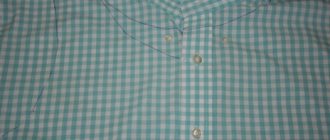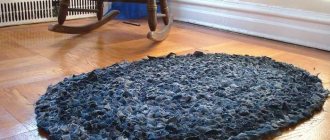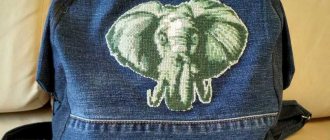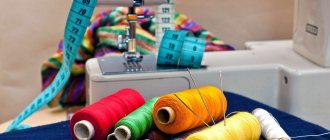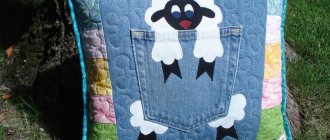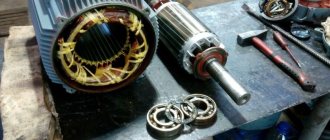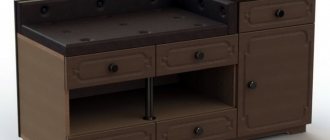Useful tips
Sometimes it can be difficult to part with your favorite things, which sometimes include pieces of furniture that were very useful, but are outdated and are usually replaced.
But even if you bought a new piece of furniture to replace the old one, you can turn the latter into something different, but no less useful.
Old chairs can be found in almost every home, and if you really want to replace them, you still shouldn’t throw them away, since old chairs can be used to make other useful things for your home, garden and cottage.
For example, you can use an old chair to make a towel rack, a garden bench, a convenient pet feeder and much more.
Here are the most interesting crafts that you can make using old chairs:
Remaking an old chair with your own hands: a street bench.
For such a bench you will need two or three chairs. These chairs can be spray painted or left with an antique look.
1.1. If the chairs are too high, you can file down their legs a little.
1.2. You can purchase special cushions for chairs. Some are sold separately (in which case they should be joined with a stitch), but you can also find 4 pads joined together and cut off the excess part.
1.3. To make three chairs look more like one bench, you can purchase or find two or three boards that need to be cut to the required length (the length of three chairs) and joined.
*If desired, you can round the ends.
1.4. Prepare a piece of fabric whose length and width exceeds the length and width of the pads. Lay the fabric pattern down on the floor and place pillows on it.
New life for old wooden chairs: feeders for large dogs.
Tall dogs will find it easier if the feeders are a little higher, especially for older dogs who find it difficult to keep their heads down all the time.
You just need a file tool, a bowl and a pencil.
2.1. Before you start cutting a hole in the chair, you need to sand it first.
2.2. Place the bowl upside down on a chair and trace with a pencil. After this, inside the resulting circle, draw a circle of smaller diameter. This can be done with a compass or a plate of smaller diameter than the bowl.
2.3. Make a hole inside the circle with a drill, from which you can then begin to cut the circle. You can first cut a circle of smaller diameter and check the stability of the bowl in the formed circle. Make the circle even larger if necessary.
2.4. Sand the inside of the hole with sandpaper.
*You can paint the chair and then insert the bowl.
Repair of stool leg fastenings
Before moving the legs from the old stool, you need to check the reliability of the legs, depending on the fastening design, to the mounting frame or slats. If, when screwing the stool leg until the thread stops, it continues to turn, then you can try to restore the rigidity of the fixation by winding a thick thread or flax fiber onto the thread, which plumbers use when threading metal pipes.
If you cannot firmly fix the leg in the mount using thread sealing with thread or flax, it means that the thread is completely damaged and the stool mount needs to be repaired.
Repairing the stool fastening can be done in two ways, using a stud with an M10 metric thread and a nut, or using an M10 bolt instead of a threaded stud. The final result of the repair will be the same and which method to use depends on the presence of nuts or bolts.
Fastening the stool leg with a nut or bolt
Depending on the hardness of the materials from which the stud and fastening strip are made, the threads may be damaged either on the stud or in the strip and this can be easily determined visually. If the thread is damaged in the bar, but is in good condition on the stud, then simply unscrew the stud from the stool leg by 10 mm, insert it into the fastening bar and screw the nut onto the stud.
You need to unscrew the stud using pliers, placing a piece of leather between their jaws and the thread of the stud so as not to damage the thread. If you can’t unscrew the pin from the leg with pliers, then you need to make edges for an open-end wrench on opposite sides at a distance of a few millimeters from the end of the pin, or, by holding it in the pin in a vice, unscrew it.
If the thread on the hairpin is completely damaged, you can unscrew it from the leg and screw the damaged end back into the leg. Thus, the thread at the fastening point will be new again, and if the thread in the fastening strip is still good, then it will be possible to do without fastening with a nut.
If, when repairing a stool using an old pin, it was not possible to securely fasten the legs, then you can fasten the leg to the seat of the stool using a bolt.
The thread in the stool leg is metric M10. Therefore, it is enough to tighten a bolt about 80 mm long instead of a stud. Thanks to the presence of a hex head, the bolt can be easily tightened with an open-end wrench with the required force.
After repairing the fastening elements of the stool legs, you can begin installing them on the new seat that was made. Usually, when removing the fastening elements of the stool legs from the old seat, the screw slots deteriorate, and often the screws themselves are covered with rust. It is better to replace them with new modern self-tapping screws 12 mm long. Before screwing them in, it is advisable to drill out the places where the screws are screwed in to the depth of its length with a drill diameter equal to half the diameter of the screw. Then, when screwing, a bump will not form around the screw, and the fastening strips of the legs will fit snugly to the plane of the seat.
The gap between the mounting strip of the legs and the seat of the stool is usually small and you will need to make a hole in the seat for the heads of bolts or nuts. The sample can be drilled using an electric drill with a perk-type drill. But be careful not to drill through the seat. If you don't have a drill, this job can be done with a chisel.
Repairing a cracked stool leg
After modernization, the stools served for more than 10 years, and suddenly I discovered that the leg of one of them began to sway.
When analyzing the cause, it turned out that the wooden leg had cracked at the thickened part along its length. As a result, the pin was not firmly fixed in the leg.
The hairpin was about eight centimeters long, the leg had a crack on only one side, and therefore in this case the easiest way to repair the stool was with epoxy resin.
Five milliliters of epoxy resin was prepared in a plastic bottle cap. Epoxy resin hardens within a few hours, so you can work without haste.
Next, all the prepared epoxy resin was poured into the threaded hole of the cracked wooden stool leg. The resin is quite thick, so I had to help it flow off with the flat blade of a screwdriver.
Now all that remains is to screw the leg onto the hairpin. At the base, the stud also needs to be lubricated with epoxy resin. A day later, a check showed that the leg was firmly held on the pin, and I hope it will last for many more years after repair.
Wall organizer from an old chair with a backrest.
By dividing the chair into parts, you can create a wall hanger or organizer, as well as a comfortable stool.
The back and seat will not be easy to separate, but then everything will be easy.
If necessary, sand all parts and paint.
To make a comfortable stool you will need:
- tools for separating chair parts
- chair seat
- durable fabric and pillow filling or regular small pillow
- stapler
- hot glue (if necessary) to hold the fabric with filling.
1. Attach the fabric to the seat using a stapler, but leave one side untouched to fill the resulting pocket with pillow filling.
*You can also use a small pillow instead of filling.
Making a stool seat
After marking the laminated chipboard sheets, they must be carefully sawed without damaging the surface of the board along the saw line. It is best to saw with a saw with fine hardened teeth. The question of which saw is best to cut and the technology for sawing chipboard sheets is discussed in detail on the page How to make a cornice for window curtains.
If you want to make a round-shaped stool seat, then after marking, you first need to cut a round blank from a sheet of chipboard using an electric jigsaw, and then give the ends of the seat a perfectly round shape using the technology described in the article How to make a table with a round top.
Pasting the ends of the stool seat with furniture edge
For gluing the ends, the best choice is a decorative furniture edge, the back side of which is covered with hot-melt adhesive. The edge is glued quickly, does not require special skills in work, after the glue cools, it holds tightly and is not afraid of moisture.
To glue the edges from the tool, you will need an electric iron, scissors and a shoe knife. First you need to cut a piece of furniture edge from the roll to a length slightly greater than the perimeter of the end of the stool seat. Next, the seat is fixed in a vice or in any other way, since you will have to hold the iron in one hand and hold the edge with the other. The temperature control knob of the electric iron is turned clockwise until three points coincide with the mark on the body of the iron, that is, the heating temperature is set to about 150˚C and the iron is connected to the network.
While the electric iron is heating up, you need to attach the furniture edge to the end of the stool so that its edges equally protrude beyond the edge corners on both sides along the entire attached length. This is necessary so that the end of the edge does not leave the plane of the end at the end of gluing. The edge is rigid and practically does not bend to the sides.
When the iron has heated up, it must be applied to the edge of the furniture and, slowly moving it, pressing with little force, pass it along the surface of the furniture edge. The glue does not get on the sole of the iron and you can do without a gasket.
Next, the iron is removed and the quality of gluing and the accuracy of the edge orientation relative to the center of the ends of the stool seat are checked. The edges of the edges should fit snugly against the ends with no air gaps. If there are gaps, then you need to iron these places again with a hot iron. If the edge is crooked, you need to iron it again until the glue warms up and correct its position. Hot-melt adhesive is convenient to work with, since when reheated it becomes liquid again, which makes it easy to correct mistakes made during gluing.
Having ironed the furniture edge along the entire length of the end of the seat, the edge is cut to size at the joint and finally glued.
Trimming excess furniture edges
After gluing the furniture edge around the perimeter of the end of the seat, you need to cut off its excess. The best tool for this purpose is a shoe knife. A shoe knife differs from a simple knife in that its blade is sharpened only on one side of the blade.
To cut off the excess part of the edge, you need to move the knife from the edge of the end of the stool seat to the center, you need to move the knife back without cutting. Then the resulting bead of the furniture edge will be cut off evenly, and the end of the stool seat will be neat. All that remains is to use fine sandpaper to walk along the sharp edge of the cut edge to round the sharp corner so that it is pleasant to sit on the stool. The new seat for the stool is made with your own hands and all that remains is to repaint the legs of the old stool in a different color and move them to the new seat.
Repurposing an old chair into a menu board
An old folding chair can be used to make a beautiful menu board.
To do this you will need:
- MDF sheets
- tools for separating the seat
- chalkboard paint
- sandpaper (if necessary)
— paint or spray paint (if necessary).
1. From MDF, cut out squares of the required size for each chair (if there is only one chair, then accordingly there will be one square from MDF).
2. Paint the MDF square with chalkboard paint.
3. Remove the seat from the chair and bolt on a painted MDF square in its place.
Bathroom hanger made from an old chair
You will need a chair back. It can be carefully cut down, sanded and painted if desired.
The seat can be cut in half and one half can be used as a hanging shelf.
This shelf can be attached with bolts and special glue. You can use corners to secure the shelf in place. This stage is optional, it is suitable for those who like to work with wood.
Such a hanger can be attached to the door in the bathroom, kitchen, cottage or other room where it may be needed.
How to choose fabric?
When choosing fabric for furniture, it is necessary to take into account factors such as wear resistance and strength. Today, fabrics are presented in a diverse range.
- If the chair will be in the living room, you can choose jacquard; this fabric has a printed pattern and retains its good appearance for a long time.
- A children's room is a place that should be not only cozy, but also practical. It is best to choose a fabric like flock; it is easy to clean and very practical to use. Flock is also chosen if there are animals in the house, this saves the furniture from the claws of a pet.
- Chenille is very resistant to various odors, it is great for the kitchen and balcony if people smoke on it.
In addition, you can opt for velor, leatherette, matting, suede and similar fabrics.
Second life of an old chair: flowerbed
For your garden, you can create a beautiful flower bed using an old chair.
To do this you will need:
- a flower pot
- jigsaw
- drill
- sandpaper (for wood processing)
- paint (if desired)
— sealant paste for smoothing out unevenness in the opening of the chair (if necessary).
*If you want to attach more pots of flowers to the chair, you can use a pipe clamp to hold the pots or jars.

